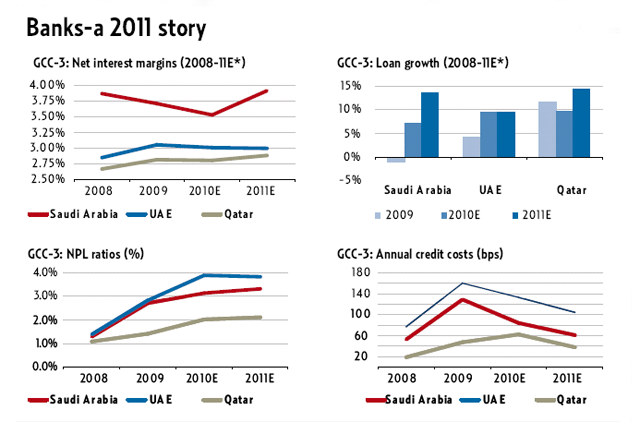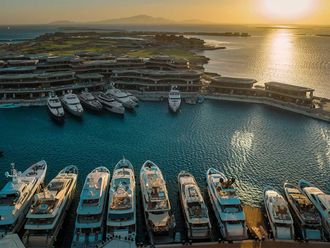
Dubai: With non-performing loans to increase in the remaining quarters of the year, and loan growth to be subdued, banks in the Middle East will continue to suffer in 2010, and are only likely to recover next year, according to a Credit Suisse analyst.
"All in all what we are saying is that in 2010 margins are going down, loan growth is subdued, NPLs to peak and credit costs are high," said Mohammad Hawa, head of Mena equity strategy and Financials Research, Credit Suisse, Investment Banking, during a media roundtable in Dubai last week."
The prospect for next year is based on improvement in all the indicators that are weighing heavily on the banks' performance this year, he said, adding that some of the region's banks are better placed than others, including their global peers, amidst the recovery process.
This year interest margins are actually shrinking The reason is that the free pricing of assets, witnessed a lot last year has stopped.
With base interest rate hikes in the US by first quarter of 2011 and the fact that the majority of the GCC banks are pegged to the US dollar, Hawa expects margin expansion next year.
Saudi Arabia is best placed to reap the benefits.
Credit Suisse analyst expects lending to remain subdued in the region. Loan growth is expected to remain about 7 to 8 per cent in Saudi Arabia, despite all the talk infrastructure spending to be around $400 billion. "The government there is pre-funding the projects. So the developers are not going to borrow project financing from the banks. This is putting a lot of pressure on the banks. Deposits are doing much better than loans," said Hawa.
Despite the massive capital injections and liquidity support provided by central banks and governments to banks in the Gulf region, the International Monetary Fund said in its recent regional outlook that banks in the region are largely risk averse and the loan growth across the region is expected to remain in single digits.
According to the IMF, a combination of factors such as an overall decline in funding, resulting from slow deposit growth and tight access to external borrowing has reduced the lending capacity of regional banks. "While [there are] uncertainties surrounding the economic recovery, a few high profile corporate defaults and problems in the Kuwaiti financial sector have contributed to an increase in risk aversion on the part of banks, a decline in credit demand from the private sector also contributed to slow credit expansion," the IMF Middle East and Central Asia Director Masoud Ahmad told Gulf News in an interview.
In line with the global trend of peaking two years after a crisis, NPLs of the region's banks will exhibit the same, and will go down next year, Hawa said. Non-performing loan ratio stood at its highest in Kuwait at 12 per cent, and 3.9 per cent in the UAE.
Talking specifically about UAE banks' exposure to Dubai World and other Dubai investment and real estate companies, he said they will likely take a 10 per cent haircut over the next eight to 10 years and not the effective rate cut of 40 per cent.
Global perspective
"In my view they will consider it as restructuring of debt rather than non-performing loans." In Hawa's calculation, the real value of the restructured debt is about 60 cents on the dollar.
From a global perspective for the region's banks, he said, return on current levels look "very good," especially when most of the global ones are expecting negative returns. The reasons for that is the much lower leverage of about seven to eight times of Gulf Arab banks compared to 15 to 20 times globally, and in some cases, like the banks in the UK, 35 times.












